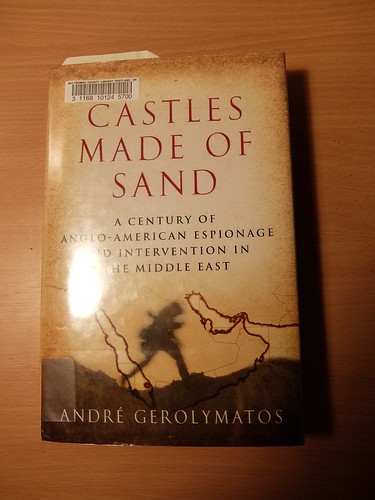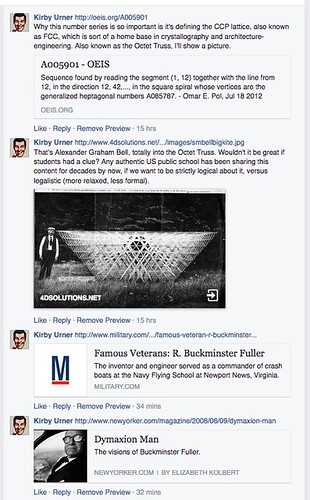In addition to working with world game planners on Global U ideas around trucking, I'm studying a New Yorker article, Dymaxion Man, about Fuller, published in 2008.
Sure, that's one way to compute the account, tell the story. New Yorker features a lot of intelligent writing.
No mention of the Cornwall Eden Project, nor of the Epcot Buckyball ("Spaceship Earth"). How does Synergetics relate to the CCP?
No mention of Dr. Arthur Loeb, nor A & B modules, T & E modules (3D printable!).
We'll have exhibits in our World Game Museum, of what the textbooks were ignoring (a basis for ignorance). Lets see how the narrative accounts compute then, shall we?
Is West Point teaching the Bucky stuff at least, sharing our American heritage with high ranking officers? Scandalous if not. We're investigating.
A couple comments, from my Facebook timeline:
Also:
The main literary trope I find regarding Bucky is that he was a failure and his inventions didn't fly. Put his awards and degrees, number of works published, historical role as "engineer saint", in a pile, and put that pile next to any detractor's and compare.
True, he didn't win a Nobel Prize. Is eleven honorary PhDs enough (given for free remember, to help a school uphold its own brand)? Elliot Norton chair of poetry at Harvard? Patents not just on the dome, but the IVM itself (like if Descartes had patented XYZ).
This guy appears to be a huge success, by objective criteria. One of the most successful who ever lived. I think the "he was a failure" trope is a projection. People think "the world is still a ghetto ergo Bucky did not succeed." Specious. Completely void of real thought.
Or was it 47 PhDs? That's what BFI claims. Depends what "doctorate" means maybe.
Such a failure right? Poor slob.
Sure, that's one way to compute the account, tell the story. New Yorker features a lot of intelligent writing.
No mention of the Cornwall Eden Project, nor of the Epcot Buckyball ("Spaceship Earth"). How does Synergetics relate to the CCP?
No mention of Dr. Arthur Loeb, nor A & B modules, T & E modules (3D printable!).
We'll have exhibits in our World Game Museum, of what the textbooks were ignoring (a basis for ignorance). Lets see how the narrative accounts compute then, shall we?
Is West Point teaching the Bucky stuff at least, sharing our American heritage with high ranking officers? Scandalous if not. We're investigating.
A couple comments, from my Facebook timeline:
Also:
The main literary trope I find regarding Bucky is that he was a failure and his inventions didn't fly. Put his awards and degrees, number of works published, historical role as "engineer saint", in a pile, and put that pile next to any detractor's and compare.
True, he didn't win a Nobel Prize. Is eleven honorary PhDs enough (given for free remember, to help a school uphold its own brand)? Elliot Norton chair of poetry at Harvard? Patents not just on the dome, but the IVM itself (like if Descartes had patented XYZ).
This guy appears to be a huge success, by objective criteria. One of the most successful who ever lived. I think the "he was a failure" trope is a projection. People think "the world is still a ghetto ergo Bucky did not succeed." Specious. Completely void of real thought.
Or was it 47 PhDs? That's what BFI claims. Depends what "doctorate" means maybe.
Such a failure right? Poor slob.
After being spurned early in his career by the architecture and construction establishments, Fuller was later recognized with many major architectural, scientific, industrial, and design awards, both in the United States and abroad, and he received 47 honorary doctorate degrees. In 1983, shortly before his death, he received the Presidential Medal of Freedom, the nation's highest civilian honor, with a citation acknowledging that his "contributions as a geometrician, educator, and architect-designer are benchmarks of accomplishment in their fields."
Study Circle. Trucking simulations, @Iran freeways. @NewYorker toes the line on "poor slob Bucky" https://t.co/zYnao31TjJ @BuckyFullerInst— Kirby Urner (@thekirbster) February 10, 2017



